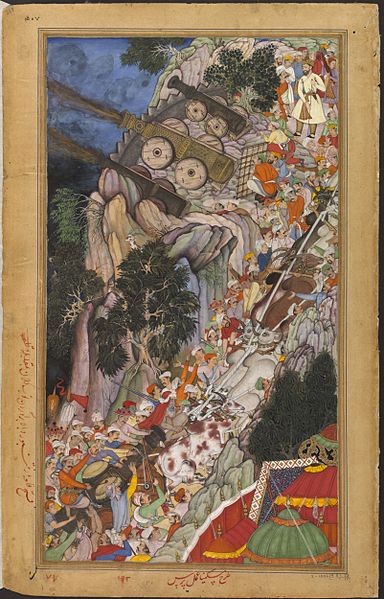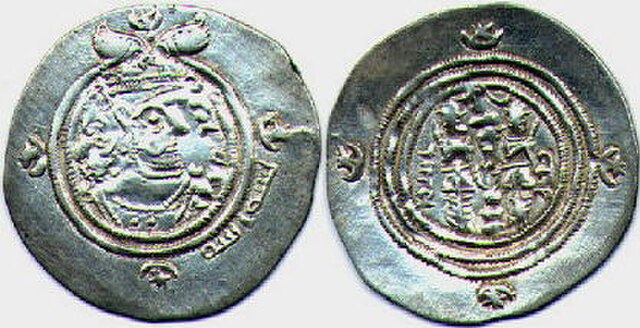The terms Muslim world and Islamic world commonly refer to the Islamic community, which is also known as the Ummah. This consists of all those who adhere to the religious beliefs, politics, and laws of Islam or to societies in which Islam is practiced. In a modern geopolitical sense, these terms refer to countries in which Islam is widespread, although there are no agreed criteria for inclusion. The term Muslim-majority countries is an alternative often used for the latter sense.
Safavid Empire's Zamburak.
Bullocks dragging siege-guns up hill during Mughal Emperor Akbar's Siege of Ranthambore Fort in 1568.
The Mughal Army under the command of Islamist Aurangzeb recaptures Orchha in October 1635.
Gun-wielding Ottoman Janissaries in combat against the Knights of Saint John at the Siege of Rhodes in 1522.
The history of Islam concerns the political, social, economic, military, and cultural developments of the Islamic civilization. Most historians believe that Islam originated with Muhammad's mission in Mecca and Medina at the start of the 7th century CE, although Muslims regard this time as a return to the original faith passed down by the Abrahamic prophets, such as Adam, Noah, Abraham, Moses, David, Solomon, and Jesus, with the submission (Islām) to the will of God.
Coin of the Rāshidūn Caliphate (632–675 CE). Pseudo-Byzantine type with depictions of the Byzantine emperor Constans II holding the cross-tipped staff and globus cruciger.
Close-up of one leave showing chapter division and verse-end markings written in Hijazi script from the Birmingham Quran manuscript, dated between c. 568 and 645, held by the University of Birmingham.
1314 manuscript illustration by Rashid ad-Din depicting the Negus of medieval Abyssinia declining a Meccan delegation's request to surrender the early Muslims.
The rāshidūn caliphs used symbols of the Sasanian Empire (crescent-star, fire temple, depictions of the last Sasanian emperor Khosrow II) by adding the Arabic expression bismillāh on their coins, instead of designing new ones.








